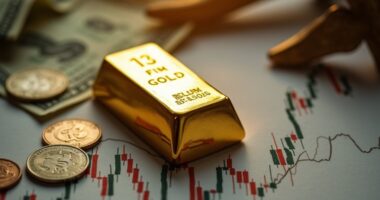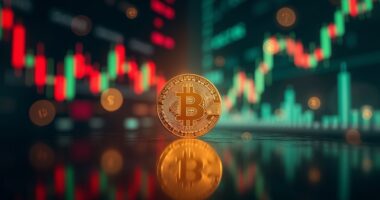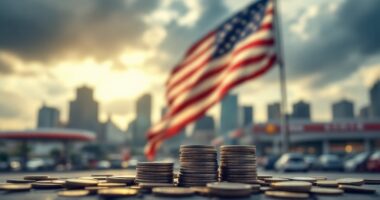As the Trump administration’s sweeping new tariffs send shockwaves through global markets, investors are rapidly shifting their expectations toward more aggressive Federal Reserve rate cuts to cushion the economic blow. With U.S. equity indices plunging over 10% in just two days, market participants are recalibrating their outlook in real-time.
The economic implications are substantial. The new tariffs have catapulted the average effective U.S. tariff rate to 22.5%, heights not seen since 1909—think Teddy Roosevelt and Model T era economics suddenly making a comeback. The 10-year Treasury yield has dropped below 4% as investor expectations for growth decline.
America’s return to Teddy Roosevelt-era tariffs signals a dramatic shift, dragging century-old economic policies into our modern economy.
These trade barriers are expected to trim U.S. real GDP growth by 0.9 percentage points in 2025, leaving the economy 0.6% smaller over the long haul.
For everyday Americans, the math looks painfully simple: tariffs translate to higher prices. The projected 2.3% increase in overall price levels equates to roughly $3,800 in additional annual costs per household.
Clothing shoppers will feel particularly pinched, with apparel prices potentially jumping by a whopping 33%.
The Fed now finds itself in an economic policy pretzel. On one hand, futures markets anticipate up to four rate cuts by year’s end (double previous expectations), with a 30% chance of cutting in May and 70% in June.
On the other hand, raising inflation complicates the Fed’s usual playbook. Chair Powell’s cautious “no urgent need to act” stance may soon face a stress test.
Wall Street’s mood has soured considerably. JPMorgan now pegs global recession probability at 60%, up from 40% pre-tariffs.
Goldman Sachs isn’t far behind, putting U.S. recession odds at 45% if tariffs remain in place.
The situation resembles an economic game of chicken, with businesses adopting a “wait-and-see” approach—scaling back hiring plans and scrambling to diversify supply chains. This economic climate bears resemblance to crypto bear markets where panic selling and negative sentiment dominate investor psychology. Unemployment figures are expected to worsen, with projections showing the rate will increase by 0.5 percentage points by the end of 2025.
Meanwhile, countries like Vietnam and South Korea face particularly vulnerable positions in this escalating trade tension.
For investors, this economic weather forecast looks increasingly stormy, with periods of volatility likely to continue as markets digest each new development.









